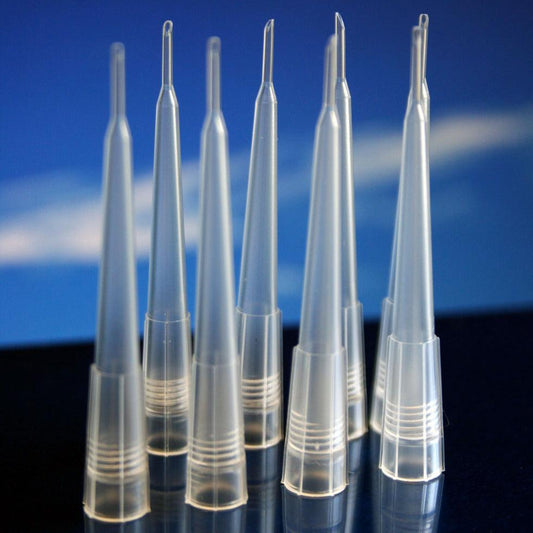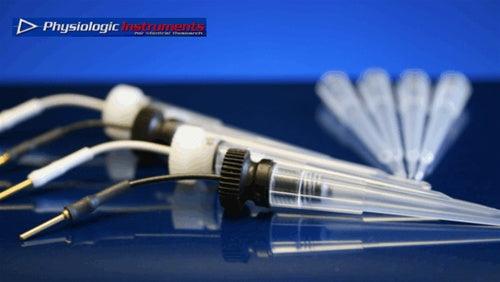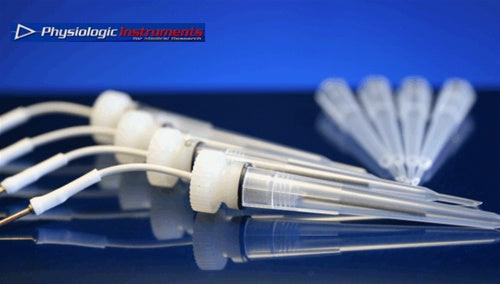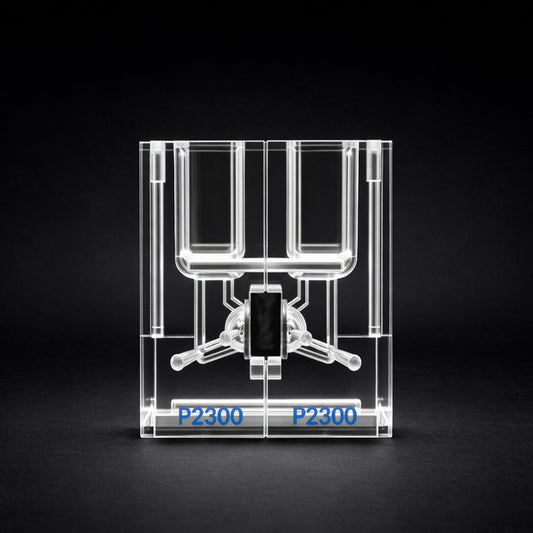Inside the Fish Gut:
Why measuring absorption—not just composition—wins feed trials
Aquaculture feed has entered a data-driven era. Formulators are under pressure to replace fishmeal/oil, raise feed conversion efficiency, and document that nutrients are actually absorbed by target species and life stages. Proximate analysis and amino-acid profiles tell you what’s in the pellet. They don’t tell you what crosses the gut wall.
Ussing chamber systems close that gap. By mounting a viable section of intestinal epithelium between two half-chambers—apical (luminal) and basolateral (serosal)—researchers can control the environment on each side and measure trans-epithelial transport and barrier integrity in real time. With the right protocols, you can answer the questions that decide feed success:
-
Which ingredients deliver the highest bioavailable amino acids, sugars, and minerals for this species and life stage?
-
How do processing, particle size, enzyme pre-treatments, or functional additives affect transport rates?
-
Is our new plant-based blend compromising tight junction integrity and increasing paracellular leak?
-
How do stress, disease, or genetics shift transporter function?
What follows is a practical, research-grade guide structured around five core uses you highlighted—nutrient/ion transport, barrier function, diet effects, genetics/disease, and integration with in-vivo work—plus implementation details and a concrete workflow you can adopt today.
Ussing chamber basics (what it measures and why it matters)
A Ussing chamber holds a flat piece of intestinal tissue between two reservoirs containing defined solutions. Electrodes measure:
-
Short-circuit current (Isc): the net active ion transport across the epithelium when the transepithelial potential is clamped to zero. Changes in Isc reflect transport via channels/transporters (e.g., Na⁺-glucose cotransport increasing electrogenic current).
-
Transepithelial potential (Vt): the voltage difference between apical and basolateral sides when unclamped.
-
Transepithelial electrical resistance (TER): an index of barrier integrity and tight-junction function; higher TER generally indicates tighter epithelia.
-
Paracellular permeability: derived from conductance (1/TER) and tracer flux (e.g., FITC-dextran, mannitol).
By altering the luminal solution (e.g., adding a candidate peptide blend or changing Na⁺, Cl⁻, or glucose), and measuring the electrical response and tracer flux, you obtain quantitative, mechanism-linked evidence of absorption potential and barrier effects.
1) Measuring nutrient & ion transport (bioavailability you can defend)
What to measure
-
Sugars: Add d-glucose apically ± phloridzin to isolate SGLT1-mediated Na⁺-glucose cotransport (Isc rise inhibited by phloridzin).
-
Amino acids/peptides: Test l-alanine (system B⁰), l-lysine/arginine (cationic transporters), or peptide substrates (PepT1) ± specific inhibitors.
-
Minerals & ions: Na⁺, Cl⁻, Ca²⁺, phosphate; use radiotracers or ion-selective electrodes when needed.
-
Vmax/Km shifts: Build dose–response curves to quantify transporter capacity/affinity with Michaelis–Menten fits.
Why feed formulators care
Two protein concentrates with identical crude protein can yield different epithelial uptake because transporter affinity, anti-nutrients, processing damage, or peptide size distributions differ. Ussing chambers let you screen lots, vendors, and processing conditions (toasting, extrusion, hydrolysis) and select inputs on absorptive performance, not just spec sheets.
Practical tips
-
Segment choice: Proximal vs distal intestine can exhibit distinct transporter profiles in salmonids, sea bream, tilapia, etc. Match intestinal segment to target species and life stage.
-
Temperature & osmolality: Maintain species-appropriate temperatures and ionic composition; aquaculture species are sensitive to thermal and salinity shifts.
-
Throughput: Multi-channel systems (e.g., 4–8 chambers) enable replication across ingredients, concentrations, and inhibitors in the same run.
2) Assessing intestinal barrier function (TER and leak paths)
Feed is not only nutrition; it is contact chemistry with the gut lining. Tight junctions (claudins/occludins) regulate paracellular leak, while mucus, transporters, and immune cells maintain homeostasis. Ussing chambers quantify barrier status via:
-
TER (Ω·cm²): Sensitive to tight-junction modulation by bile salts, saponins, phytochemicals, heat-damaged proteins, or mycotoxins.
-
Paracellular flux: Use inert probes (FITC-dextran 4–10 kDa, mannitol) to detect leak independent of electrogenic transport.
Why it matters
A formulation that looks good on paper but depresses TER or increases paracellular leak can reduce feed efficiency, elevate base metabolic cost, and increase pathogen translocation risk—costly in high-density systems. Conversely, additives like butyrate, nucleotides, prebiotics, or specific mineral balances may improve barrier metrics, supporting growth and survivability.
What to report to stakeholders
-
Baseline TER (mean ± SD) by intestinal region & life stage.
-
ΔTER (%) after 30–60 min exposure to candidate feed extracts.
-
Paracellular flux (e.g., %/h of FITC-dextran crossing).
-
Correlation with growth/FCR from prior trials when available.

3) Studying diet and ingredient effects (from hypothesis to formulation)
Typical comparisons
-
Marine vs plant proteins: Examine whether anti-nutritional factors depress SGLT1/PepT1 activity or TER; test mitigation via fermentation, enzyme pre-treatments, or heat optimization.
-
Omega-3 & lipid sources: Assess how EPA/DHA levels and emulsifier systems affect epithelial transport and barrier integrity; consider bile salt mimetics in luminal buffer for realism.
-
Micronutrients & chelates: Compare bioavailability of mineral forms (e.g., phosphate sources, chelated trace minerals) via net ion flux and changes in electrical parameters.
-
Processing variables: Extrusion temperature, moisture, and particle size affect digestibility and peptide profile; screen with small ex-vivo panels before running tanks.
Designing a practical screen
-
Prioritize questions (e.g., “Can we replace 30% fishmeal with fermented soy concentrate without losing alanine/glucose uptake?”).
-
Prepare feed extracts that mimic intestinal digesta (enzymatic hydrolysates at physiological osmolality).
-
Run dose–response for key substrates ± inhibitors to fingerprint transporter engagement.
-
Include barrier readouts (TER/flux) to catch hidden liabilities.
-
Rank candidates by integrated score (normalized Isc gain, Km/Vmax, TER change, flux penalty).
-
Advance top 1–2 to pilot tank digestibility/growth trials.
This sequence replaces “trial-and-error feeding” with a fast, mechanistic triage.
4) Investigating genetic and disease impacts (design feeds for the fish you have)
Strain selection, broodstock nutrition, and health history all reshape the gut. Ussing chambers help you quantify:
-
Strain differences: Compare transporter capacity (e.g., higher Na⁺-glucose cotransport in fast-growing lines).
-
Stress & disease: Monitor TER depression and altered ion transport under pathogen challenge, parasitism, crowding, or sub-optimal salinity.
-
Recovery tracking: Evaluate whether a therapeutic additive or vaccination program normalizes transport and barrier metrics.
For breeding or health teams, these data expose mechanistic levers—which transporters are underperforming, which epithelial regions are vulnerable—so nutrition programs can be matched to biology rather than averages.
5) Supporting (not replacing) in-vivo studies
Ex-vivo results are strongest when linked to whole-animal outcomes. A robust program integrates:
-
In-silico pre-screening: Filter candidate ingredients by composition, anti-nutrient risk, cost, and sustainability.
-
Ex-vivo Ussing screen: Mechanistic ranking for absorption & barrier integrity.
-
Pilot digestibility / balance trial: Confirm improvements in apparent digestibility coefficients (ADCs) and energy utilization.
-
Grow-out validation: FCR, SGR, survival, fillet quality markers.
-
Feedback loop: Use Ussing data to explain wins/losses and refine the next iteration.
This staged approach saves months and minimizes live-animal usage while improving the odds that a pilot diet will scale.
Practical methods: from tissue to traceable decisions
Species & segment selection
-
Salmonids: pyloric caeca + mid intestine for nutrient uptake; maintain 10–15 °C.
-
Tilapia/carp: mid to distal intestine; 24–28 °C; pay attention to bicarbonate and Na⁺ balance.
-
Marine species (e.g., sea bream, sea bass): adjust salinity and Ca²⁺/Mg²⁺ to match plasma-like serosal conditions.
Buffer design
-
Apical (luminal) solution: mimic digesta osmolality and Na⁺; add substrates/additives under test.
-
Basolateral solution: maintain physiological K⁺/Na⁺, HCO₃⁻ buffering; oxygenate as needed.
-
Inhibitor controls: phloridzin (SGLT1), ouabain (Na⁺/K⁺-ATPase), CFTR blocker, amiloride, etc.
Electrode & calibration
-
Use Ag/AgCl electrodes with KCl agar bridges; zero and verify drift <1 µV/s.
-
Two-point TER check with known shunt resistor to validate system.
-
Log at 1–2 Hz; annotate dosing times for event-based analysis.
Data reduction
-
ΔIsc (µA/cm²) after substrate addition (peak or steady-state).
-
TER (Ω·cm²) at baseline and after 30/60 min.
-
Flux (J, nmol·cm⁻²·h⁻¹) from tracer measurements.
-
Normalization: surface area-normalized; report temperature and segment.
Statistics & reporting
-
Minimum n≥6 tissues per condition from ≥3 fish.
-
Mixed-effects models (fish as random effect) when multiple tissues per animal.
-
Pre-registered pass/fail thresholds (e.g., ≥15% ΔIsc gain with ≤10% TER loss).
Example workflow: replacing 40% fishmeal in juvenile salmon
Question: Can a fermented plant-protein blend + protease pre-treatment match fishmeal for absorptive performance without compromising barrier integrity?
Design:
-
Tissues: mid intestine, n=8 per condition.
-
Substrates: 10 mM l-alanine; 5 mM d-glucose; 2 mM di-peptide (Gly-Gly).
-
Controls: +/– phloridzin (SGLT1), +/– Gly-Gly competitor, FITC-dextran 4 kDa for leak.
-
Readouts: ΔIsc for each substrate, TER at 0/30/60 min, FITC flux over 60 min.
Outcome interpretation:
-
If ΔIsc_Alanine and ΔIsc_GlyGly ≥90% of fishmeal while TER change within ±5% and FITC flux not elevated → advance to pilot tank trial.
-
If Isc is good but TER drops >15% → investigate anti-nutrient removal, add butyrate, or adjust processing; retest.
-
If transporter-specific deficits exist (e.g., low SGLT1 response) → explore carbohydrate profile adjustments or enzyme inclusion.
This is the kind of defensible, quantitative story your sales and regulatory teams can stand behind.
Instrumentation that shortens time-to-answer
Physiologic Instruments Ussing chamber systems are built for high-precision epithelial measurements in aquatic species:
-
EasyMount multi-channel frames (e.g., 6-channel): parallel throughput for ingredient screening and replicates.
-
Heated bases & recirculation manifolds: maintain tight temperature control for cold- or warm-water species.
-
Interchangeable apertures & tissue supports: accommodate small distal intestine or pyloric caeca segments without edge leak.
-
Integrated voltage-clamp & software data acquisition: stable Isc/Vt control, automated TER, event annotation, export to CSV for stats.
-
Custom salinity-compatible wetted materials and tubing kits for marine work.
-
Global direct support: protocol design, on-site or remote training, repair/calibration, and custom fixturing for unusual tissues.
Explore our Ussing Chamber Systems
Voltage Clamp Explained
Implementation checklist for your next study
-
Define 1–3 decision-critical questions tied to cost or performance (e.g., replace X% fishmeal).
-
Pre-specify transporters/substrates and barrier metrics you’ll measure.
-
Build realistic luminal extracts from the candidate diet(s).
-
Choose segment & temperature to match target species/life stage.
-
Run multi-channel replicates with inhibitor controls.
-
Analyze ΔIsc, TER, and flux with mixed-effects modeling.
-
Present a simple traffic-light score (green/amber/red) per candidate with next steps.
FAQ - Questions & Answers
1. How are Ussing chambers used to measure nutrient absorption in fish feed research?
Answer: Ussing chambers measure how nutrients like glucose, amino acids, and ions move across isolated fish intestinal tissue. Researchers mount a section of gut between two fluid-filled halves—one simulating the intestinal lumen and the other the bloodstream. By monitoring changes in electrical current (short-circuit current) and transepithelial voltage, they can detect active nutrient transport. This allows aquafeed developers to quantify how efficiently ingredients such as plant proteins, fishmeal alternatives, or additives are absorbed by the fish intestine.
2. Why is intestinal barrier integrity important when developing new aquafeed formulations?
Answer: A healthy intestinal barrier prevents harmful bacteria, toxins, and large molecules from entering the bloodstream while allowing nutrients to pass through. If a feed ingredient weakens the barrier—detected as a drop in transepithelial electrical resistance (TER) in Ussing chamber tests—it may increase stress, inflammation, or disease susceptibility. Conversely, feeds that maintain or improve TER values indicate better gut health and nutrient utilization. For feed manufacturers, verifying intestinal integrity is crucial for both fish welfare and feed performance.
3. What kinds of nutrients or ions can Ussing chambers measure in aquaculture species?
Answer: Researchers can measure uptake of sugars (glucose, fructose), amino acids (alanine, lysine, glutamine), peptides, minerals (phosphate, calcium), and ions such as sodium and chloride. Each nutrient’s transport is associated with specific ion currents that the Ussing chamber’s electrodes detect. Some studies also use radiotracers or fluorescent markers for precise quantification. This flexibility makes Ussing chambers one of the most comprehensive tools for evaluating nutrient bioavailability across species like salmon, tilapia, and sea bream.
4. Can Ussing chamber data replace in vivo digestibility or feeding trials?
Answer: Not entirely—Ussing chamber studies complement, not replace, in vivo work. Chambers provide ex vivo, tissue-level insights into transport rates and barrier function, allowing researchers to screen ingredients or additives before committing to full-scale feeding trials. This step reduces costs, shortens development time, and limits live-animal use. Once promising candidates are identified, traditional digestibility trials confirm growth and feed conversion outcomes.
5. How do researchers prepare fish intestinal tissue for Ussing chamber experiments?
Answer: After euthanizing the fish humanely, the intestine is dissected, rinsed with saline, and cut into flat sections suitable for mounting. The tissue must remain viable—oxygenated and kept at species-appropriate temperature and salinity. Each section is clamped between two halves of the chamber, exposing the inner (luminal) and outer (serosal) sides to controlled solutions. This setup preserves natural ion gradients and transport processes for accurate measurement.
6. What diseases or genetic factors can Ussing chambers help investigate in fish?
Answer: Ussing chambers help reveal how diseases or genetic variations affect nutrient absorption. For example, intestinal inflammation, parasitic infections, or stress can reduce transporter activity and lower TER values. Likewise, genetic lines bred for faster growth may show higher active transport of glucose or amino acids. By comparing tissues across conditions, researchers can isolate the physiological mechanisms behind performance differences.
7. How do feed additives like enzymes or omega-3 fatty acids influence nutrient absorption in Ussing chamber studies?
Answer: Feed additives can either enhance or impair intestinal transport. Enzymes and probiotics may improve amino acid uptake and barrier integrity, while excessive fats or poorly emulsified omega-3 sources might temporarily reduce absorption efficiency. Using Ussing chambers, scientists can expose intestinal tissue to feed extracts with and without these additives and directly measure how transport currents or TER values change—providing evidence for optimal inclusion levels.
8. What is the typical duration of an Ussing chamber experiment in fish nutrition research?
Answer: Most fish tissue experiments run between one and three hours. The protocol typically includes an equilibration phase (20–30 minutes), baseline readings, sequential substrate additions (e.g., glucose, amino acids), and inhibitor tests. TER and ion flux are recorded continuously. Tracer studies may extend slightly longer to capture steady-state fluxes. Multi-channel systems, like Physiologic Instruments’ EasyMount rigs, allow several tissues or diets to be tested simultaneously.
9. Which fish species are most commonly studied with Ussing chamber systems?
Answer: Ussing chamber methods have been validated for many aquaculture species including Atlantic salmon, rainbow trout, European sea bream, sea bass, tilapia, carp, and catfish. The technique is adaptable—chamber temperature, saline composition, and tissue segment (proximal or distal intestine) are adjusted to each species’ physiology. The same core principles apply across marine and freshwater fish.
10. How can aquafeed manufacturers integrate Ussing chamber data into product development?
Answer: Feed manufacturers use Ussing chamber data to identify which formulations truly improve absorption and gut integrity before expensive grow-out trials. Data such as ΔIsc (transport change) and TER stability guide ingredient selection, enzyme inclusion, and processing choices. By linking these physiological metrics with digestibility and growth data, companies can market products backed by quantifiable “bioavailability performance,” differentiating themselves in a competitive aquafeed market.
Turn Ussing data into commercial advantage
When a fish food buyer asks, “Why should we trust this plant-based formula?”, you can present traceable absorption and barrier metrics alongside growth and FCR. That shifts the conversation from ingredients to physiology-backed performance.
If you’re ready to build or upgrade an Ussing program—whether a compact 2-channel starter or a high-throughput 6-channel EasyMount with integrated voltage clamp—our team can help you design protocols, select perfusion hardware, and train staff for reliable data from day one.

Recommended Equipment for This Research
| Equipment Category | Description | Link |
|---|---|---|
| Ussing Chamber Systems | Complete electrophysiology platforms for epithelial transport and barrier function studies. | Ussing Chamber Systems |
| Ussing Chambers (EasyMount & Classic) | Individual chambers for intestine, airway, renal, and custom tissues. | Ussing Chambers |
| Ussing Chamber Slider Inserts | Precision acrylic sliders for mounting tissues and replicating experimental geometries. | Ussing Chamber Slider Inserts |
| Voltage/Current Clamps (VCC MC8 Series) | Voltage clamp amplifiers for CFTR assays, TEER, and transepithelial measurements. | Voltage Clamps |
| Acquire & Analyze Software | Data acquisition and analysis software for epithelial electrophysiology experiments. | Acquire & Analyze |








